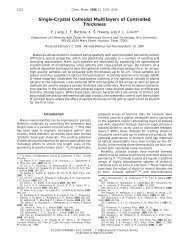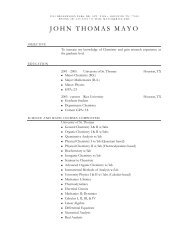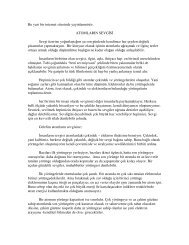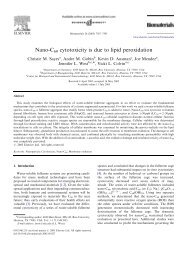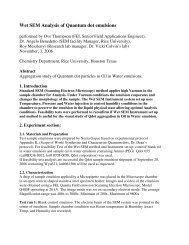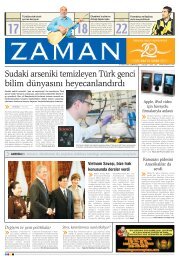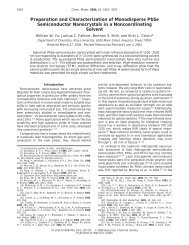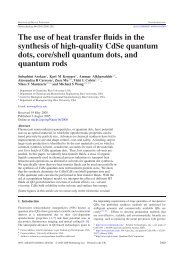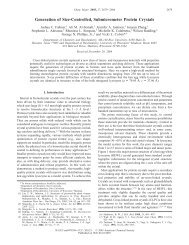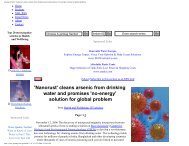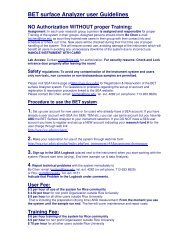Magnetic Separation: Industrial and Lab Scale Applications
Magnetic Separation: Industrial and Lab Scale Applications
Magnetic Separation: Industrial and Lab Scale Applications
Create successful ePaper yourself
Turn your PDF publications into a flip-book with our unique Google optimized e-Paper software.
A. Value of <strong>Magnetic</strong> <strong>Separation</strong><br />
Although the magnetic field would make no distinction between various magnetic<br />
particles, magnetic separation h<strong>and</strong>picks those with magnetic affinity from physically<br />
similar mixtures, i.e. in terms of density, shape, <strong>and</strong> size (Svoboda 2003).<br />
Among many applications we’ll discuss briefly in the following pages, the following<br />
ones would give a sense of how valuable magnetic separation could be. As early as 1970s<br />
Delatour <strong>and</strong> Kolm (Delatour 1973 <strong>and</strong> 1975) treated water samples from the Charles<br />
River (Fe3O4 seeding, 5ppm Al 3+ ) with a high flow velocity HGMS (Vo= 136 mms -1 ,<br />
Ho=1T) to obtain the following reductions:<br />
- coliform bacteria from 2.2x10 5 /l to 350/l<br />
- turbidity by 75%<br />
- color by 95%<br />
- suspended solids by 78% (Gerber 1983 p 153)<br />
Later, Bitton <strong>and</strong> Mitchell removed 95% of the viruses from water by magnetic filtration<br />
following a 10 minutes of contact period with magnetite (added to be 250 ppm) (Gerber<br />
1983 p 153). The following years, Boliden Kemi AB reduced phosphorus of water<br />
supplies at least 87%. (Gerber 1983 p 154).<br />
B. Physics of the process<br />
a. Introduction of the concept



